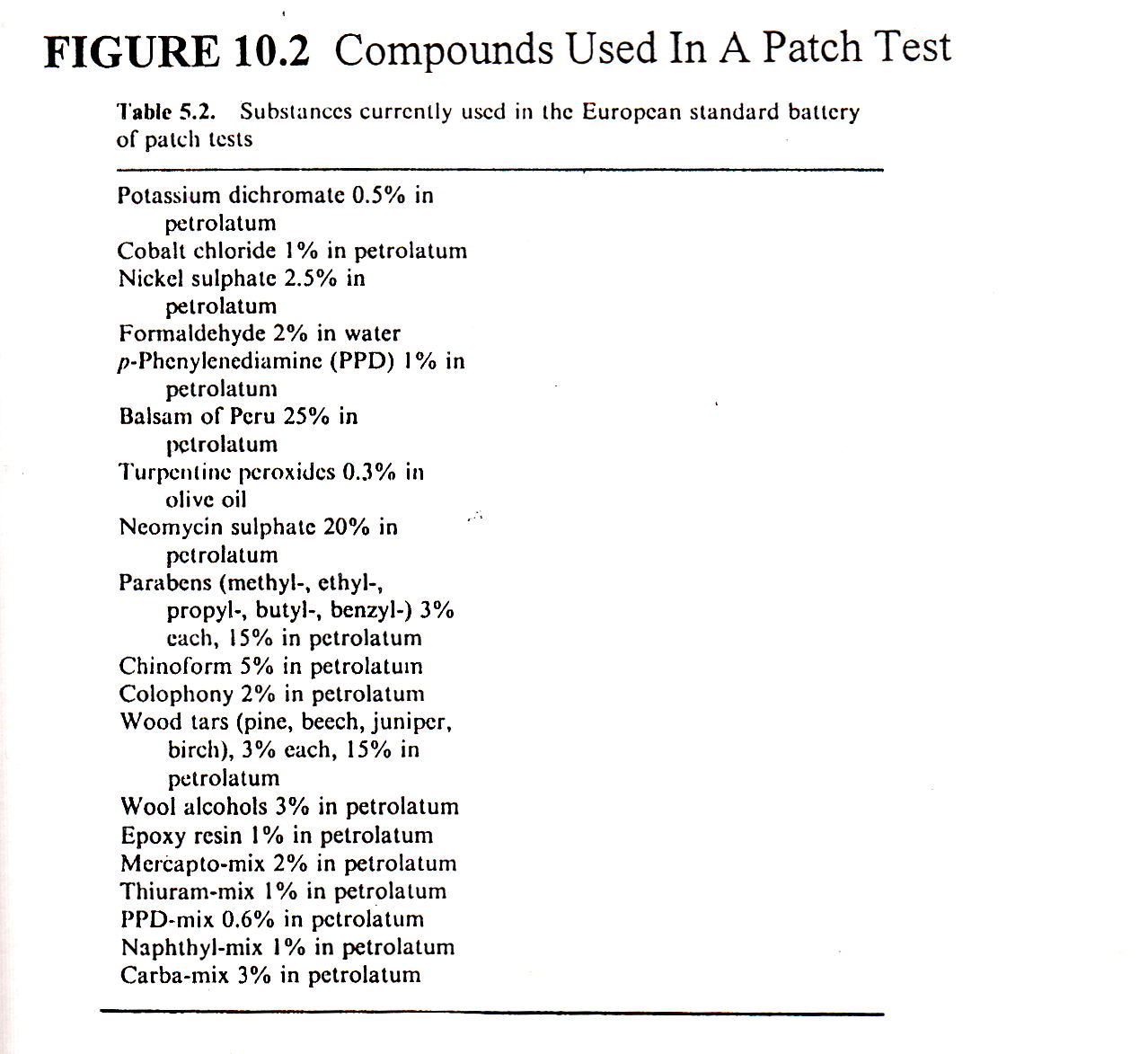| 10.0 Diagnosis Of Plant Dermatitis [18] [6] In general doctors, general practitioner are very negligent in the way they treat the disease, because of the vast number of causes, cross reactions, and complicated interactions between possible cures. Every case is individual. Successful treatment hinges on listening and questioning the patient, using appropriate measures to the site and severity, and requires meticulous attention to detail. In a case of plant contact Dermatitis,A professional Doctor would: * Decide whether it is an irritant or sensitive reaction * Question the patients history and previous cases of this sort. * Ask his occupation, possible causes, which medicaments he is taking. * What plants and chemicals he is regularly in contact with. * Examine the patients whole body, including nails, feet, groin, orifices eyes, for any other sign, cause or spread, especially in children * Remove the patient from the cause. * If the cause cannot be found a patch test must be carried out. This will produce a confirmation of the cause, and as there are a limited number of chemicals that cause it. It however cannot be performed if the reaction is acute or patient is in shock. 10.1 Patch Test [6] Must be carried out by a specialist Physician GP or dermatologist. It is used to determine the cause or likely causes of dermatitis from plants, in diagnosis of the condition or in pre employment health checks. If minute amounts are used, there is a minimal risk of sensitisation. Small portions of plant are mixed in a soft paraffin base and applied to bare skin and covered with an impermeable material. Aluminium strip is useful, it is left in position for 48 hours. The results are recorded: NT Not Tested : ?+ Doubtful : + Weak : ++ Strong : +++ Extreme : IR Irritant The 20 most common chemicals causing dermatitis have been identified. 5 of these occur in plants. Preparation for patch test: It is essential to avoid all materials thought to be possibly responsible for eruption while applying medicaments to clear it. Presence of all active lesions must be cleared before applying a patch test, which could cause further inflammation. 10.1.1 Patch Testing With Woods: A lightly crushed leaf of the plant, flower head or petal, or sliced stalk or some sawdust. Place in 10% petroleum. Applied before evaporation. Packs are available in commercial laboratories. 10.1.2 Testing with oleorasins [5]: testing for hypersensitivity is facilitated by using commercial extracts. This will avoid sensitivity to plant juices. Patch testing with portions of the plant may be necessary when testing materials are not available, or are water soluble. This method is convenient and most often stimulates actual exposure. Thin slices of bulbs may be prepared. 10.1.3 Testing With Specific Plants: Ragweed Patients with ragweed oil sensitivity will always show a positive reaction. It must be highly diluted. Celery may cause an ordinary allergic contact reaction and photocontact dermatitis. If testing with parsnip, parsley, patch test should be exposed to sunlight. Fig trees produce a latex milky sap, and should be exposed to sunlight. Philodendron should be crushed in water. Peels of citrus fruits must be tested in 1 percent alcohol. AVOIDANCE of Spurge, Buttercup, Mustard, Tulip, Primrose, Teak, Poa Ferro, is a must, because of the risk of inflammation and sensitisation.. FIGURE 10.2 Compounds Used In A Patch Test |
 |
| Dermatitis In the Horticulture Industry By James M. Burton In Association With Pencoed College Copyright 1997. |
| Questionnare |
| Treatment |